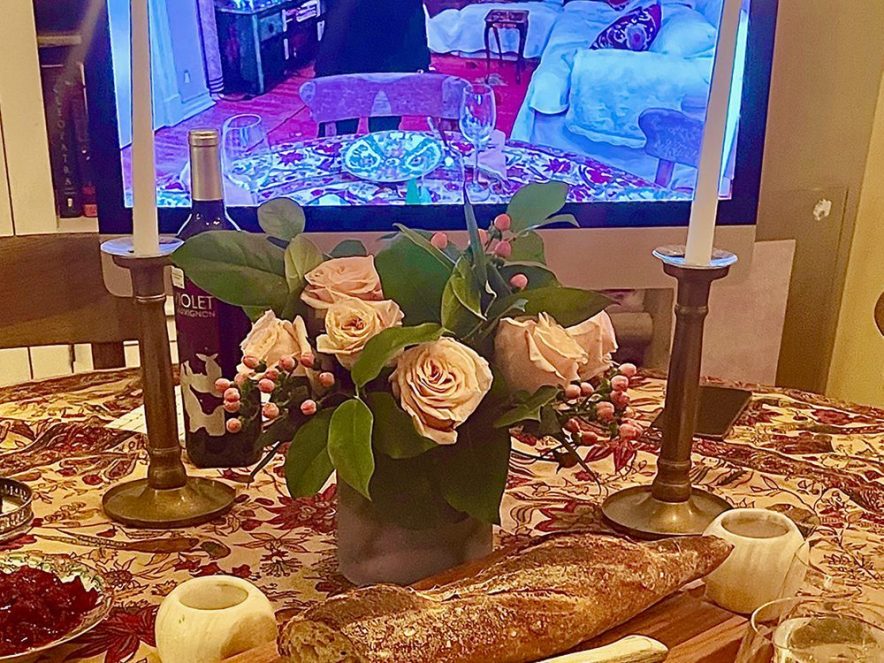
A version of this article was shared in It’s Not Just You, a weekly newsletter by TIME Editor at Large, Susanna Schrobsdorff. Subscribe here to get it free in your inbox.
Think about Pluto--how it continues to exist as itself, as always, oblivious to human categories. No one else gets to define you or determine your worth. Be a planet despite what they may call you.--Maggie Smith
Well hello! I’m so glad you’re here. This week: The psychology of holiday Zooming, lessons from a recovering pessimist, and a moment of photographic wonder.🌞
Are You Mad At Me?
Show of hands: Who began Thanksgiving by telling a group of beloved family and friends to mute themselves?
The great flaw of video platforms like Zoom for non-work gatherings is that only one person (or one little box of people) can talk at a time. This means chaos for people like my people (because no one knows who’s responding to whom). Or authoritarianism (because one of us is liable to appoint themselves the moderator and start calling on people like it’s a city council meeting).
But even if you’ve figured out how to have a conversation with 12 people simultaneously, it’s still disconcerting because we lose so much of our nonverbal communication tools in this medium.
On Zoom, there are no empathetic side glances, no covertly raised eyebrows, no eye-rolling. And if there is eye-rolling, there’s no way to know who the target is. So naturally, we assume it must be us.
This gets us to why group Zooms make us paranoid. Lack of direct eye contact scrambles the emotional radar of humans. You can’t tell if someone’s looking at you, at their dog, or at the door hoping to escape. (To be fair, on Zoom, most of us are probably just staring at our own faces. Scientifically, it’s what we humans love to gaze upon more than anything—even if it’s only to wonder when we got jowls.)
Without the body language cues that help us read moods or the kind of connection that happens in just 60 seconds of looking into another person’s eyes we have only our own neurosis to guide us. And that’s never good.
Take it from Gianpiero Petriglieri, an Associate Professor of Organisational Behaviour at INSEAD.
And after long periods apart from each other, like during a pandemic, we’re less able to tap a social skill called “theory of mind,” which allows us to intuit others’ intentions and emotions. So if you’ve had a nagging feeling that someone somewhere is mad at you, or less in love with you, or less close to you, you’re not alone.
Many of our relationships are happening more in our heads than in real life in this bewildering moment. We construct our own one-sided narratives about who’s thinking what and why. We’re tempted to read way too much between the lines of texts and emails, scanning variances in the volume of emojis, worried that someone’s mad at us. Is she signing off with a single heart now? What happened to the string of balloons and stars? Wait, what month is it? Did I miss something big in his life?
But even those maddeningly asynchronous Zoom conversations and texts are a gift this year–they’re what tethers us to each other across the space-time vortex that is 2020.
Thanks to all our tech, we get glimpses of each other’s worlds, like a time-lapse sequence of life trundling along despite it all. We can see that the youngest kids are now long-legged people who no longer love purple, someone has a new cat, and a niece who loves to bake made 17 desserts in one week. We find out that we parents haven’t lost our sense of humor yet. That California light is still gold. That no one can make corn pudding like Pam’s. And that the littlest cousin has renamed herself Ruby Starlight.
All that goodness ought to hold us for or a bit–maybe even through the winter ahead. 💌
SUBSCRIBE to It’s Not Just You here
MOMENT OF AWE ✨

Check out the spectacular winners of the 2020 Nikon’s Small World Photomicrography Competition. There are images taken via microscope of everything from a chameleon embryo to the shot of a Madagascan sunset butterfly’s wing above, taken via microscope. And you can get a 2021 calendar with this year’s images.
COPING KIT ⛱️
🎈Lessons from a Recovering Pessimist Poet Maggie Smith’s new book, Keep Moving: Notes on Loss, Creativity, and Change, is for anyone who’s looking for guideposts on the road to transformation. Check out this interview she did with NPR.
Hope was like a garment that I tried on every day. And at first, it was very oversized and itchy and misshapen and uncomfortable, and it didn't fit at all... But something really strange happened, which is that the more I tried it on for size, the better it fit.
📓 How to Let Go of Your Best Laid Plans Writer and stoic Darius Foroux on why we shouldn’t hold too tight to our plans and how to adapt to change.
I look at everything in life as borrowed from someone I personally know. Think about it. How do you act if you borrow something from a friend? You don’t get attached, but at the same time, you also take care of it. Live your life like that.
🍭 Read This Before You Try an Anti-Stress ‘Mood Chew’ Celebrities have been promoting buzzy alternative wellness products, but there’s rarely conclusive evidence that they can help people with mental health challenges.
🎥 Beautiful Distraction: TIME’s Picks for the 20 Best Movies of 2020 It may feel like you’ve watched everything ever made during this long, long year, but TIME film critic Stephanie Zacharek’s picks will surprise and delight.
SOME GIVING TUESDAY IDEAS 💖
One of the best ways to mitigate feelings of helplessness and anxiety is to take some small action–to give help when you feel emotionally needy, to open a door by asking for help. This has never been more true than now as hunger rises in the wake of the COVID-19 pandemic, and more people struggle with mental illness.
☀️Here are a few of my favorite non-profit organizations☀️
The Feeding America networkis the nation’s largest domestic hunger-relief organization. Together with individuals, charities, businesses, and government, we can end hunger.
Pandemic of Love is a mutual aid community that connects those who want to give or volunteer directly with those who’ve asked for help with essentials, things like a week’s groceries, gas money, or help with winter coats for kids.
The JED Foundation is a nonprofit that protects emotional health and prevents suicide for our nation’s teens and young adults. They partner with high schools and colleges to strengthen their mental health, substance misuse, and suicide prevention programs.
COMFORT DOG 🐕
🌟Meet Bucky, the puppy, and her comfort animal. Shared by Maya from New York City.

🎈Send questions, requests, and your comforting dog pix to me at Susanna@time.com
🌺 Did someone forward you this newsletter? SUBSCRIBE to It’s Not Just You.
More Must-Reads From TIME
- Dua Lipa Manifested All of This
- Exclusive: Google Workers Revolt Over $1.2 Billion Contract With Israel
- Stop Looking for Your Forever Home
- The Sympathizer Counters 50 Years of Hollywood Vietnam War Narratives
- The Bliss of Seeing the Eclipse From Cleveland
- Hormonal Birth Control Doesn’t Deserve Its Bad Reputation
- The Best TV Shows to Watch on Peacock
- Want Weekly Recs on What to Watch, Read, and More? Sign Up for Worth Your Time
Contact us at letters@time.com